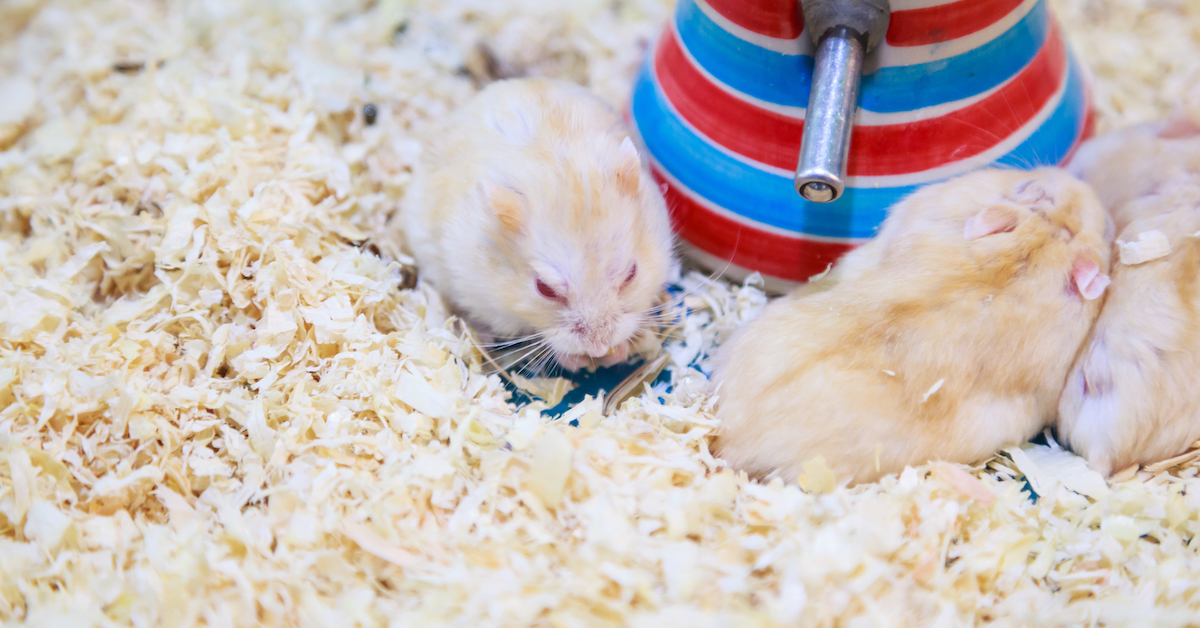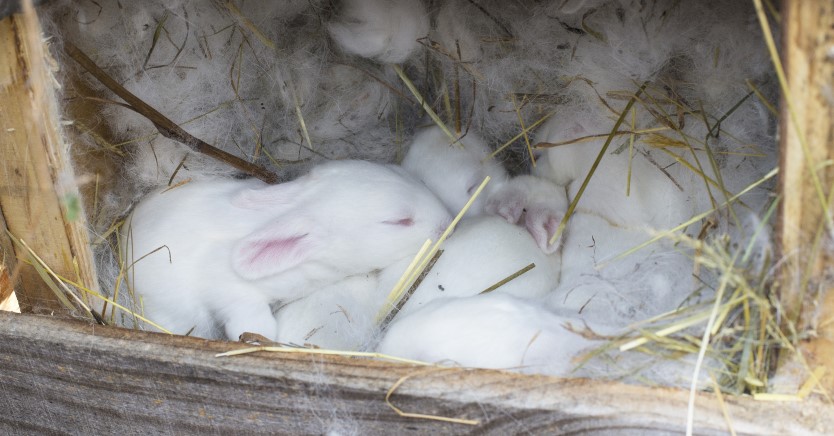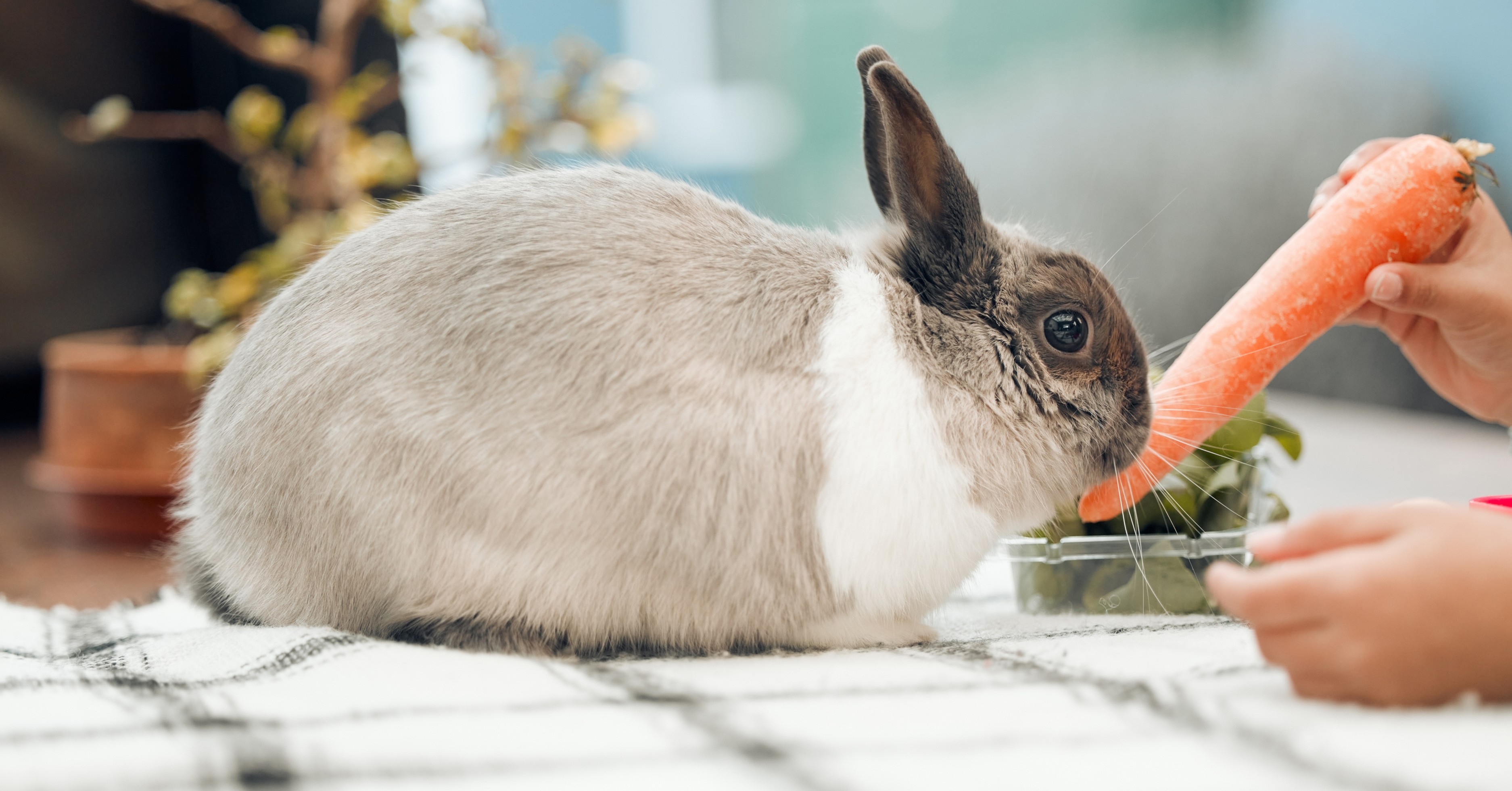What Type of Bedding Is Best for Hamsters?
The right type of bedding allows your hamster to burrow and create a cozy nest.

Hamsters may be small but they are a big commitment. They require food, water, exercise, socialization, and the proper habitat. Your hamster will require a safe space where it can live, play, and explore. The ideal habitat for a hamster typically consists of an aquarium or cage that is comfortable, dry and has predictable light. Hamsters love to burrow and build nests, which means they’ll also need a thick layer of bedding.
There are several options when it comes to hamster bedding. The type of bedding you choose will depend on several factors, such as the type of hamster, what is considered safe, what is available at your local pet store or online, and your budget. Here’s an overview of the most common types of bedding for hamsters, as well as the pros and cons of each option.
Types of Hamster Bedding
Hamsters require a safe substrate material that enables them to effectively burrow and nest in their habitat. When shopping for hamster bedding, consider the following options:
1. Aspen Shavings
If you prefer wood shavings over paper, aspen shavings are considered the only safe wood-based bedding for hamsters. Aspen shavings offer several benefits over alternative bedding materials, such as great odor control and affordability. The one downside of aspen shavings is that they tend to stick to the fur of longer-haired species of hamsters, such as long-haired Syrian hamsters. However, this is only an aesthetic issue and will not harm your pet.
2. Paper Litter
Paper-based bedding is widely available and can be found in a variety of fun colors, such as blue, pink, green, and purple. While pricier than aspen shavings, paper litter can be a great option for pet owners that want to create a colorful cage environment. You can create your own paper litter with materials like paper towels or plain paper. You want to avoid certain types of paper, such as shredded newspaper, as this can be hazardous to your hamster.
3. Soft Granule Blend
Some hamster care brands have come out with a soft granule blend of hamster bedding. This compostable bedding is made using recycled materials and is considered safe for hamsters. However, some versions of soft granule blends are not sturdy enough to allow your hamster to create nests and form tunnels. If you decide to use a soft granule blend, consider adding a top layer of aspen shavings or paper litter.
4. Paper Pellets
Paper pellets are another safe option for hamster bedding. These pellets are comfortable and do not create too much dust which could be harmful to hamsters. However, similar to soft granule blends, paper pellets do not allow for easy tunnel and nest-making. Therefore, it should only be used with supplementary bedding material.
5. Toilet Paper
If you’re in a pinch and need some bedding for your hamster, grab a roll of toilet paper. Toilet paper is a great alternative to paper bedding and is cheap and readily available. The biggest problem with toilet paper is that it does not offer great odor control. If you use toilet paper, you’ll likely find yourself having to change the bedding more frequently.
6. Timothy Hay
Timothy hay is not just a nice snack for your hamster. It can also double as bedding material. The hay is fairly absorbent and is resilient enough to allow your hamster to create a nest and burrow. It can be more difficult to find than other bedding options but can make for a cheap bedding material if you purchase it in bale form from a local farmer.
Hamster Bedding to Avoid
While there are many great hamster bedding options on the market, there are some that you want to avoid for the health and safety of your pet. When shopping for hamster bedding, avoid the following:
1. Scented Bedding
Some manufacturers still sell scented beddings designed to help cover up normal hamster odors. Unfortunately, most scented beddings are too strong for the sensitive noses of hamsters, resulting in possible respiratory issues. Steer clear of scented beddings and choose safer alternatives like aspen shavings or paper-based products. If you want to control odors better, clean out your hamster’s cage more frequently.
2. Pine and Cedar Shavings
Pine and cedar wood shavings are often sold as an alternative to aspen shavings. Unfortunately, these wood alternatives are not considered safe for hamsters. Pine and cedar shavings can be sharp and cause potential injury to hamsters. They also have a strong smell and can cause bronchial irritation.
3. Cat Litter
Some pet owners make the mistake of using cat litter as hamster bedding. Although cat litter is designed to control odors, it poses several problems for hamsters. First, it is not soft enough for hamsters to nest and burrow into. Your hamster may also decide to ingest or fill its cheek pouches with the litter, resulting in possible blockages or even death.
4. Fluffy Bedding
When shopping for hamster bedding, you may come across varieties known as “fluffy bedding.” While fluffy bedding may seem like a good thing, it can increase your hamster’s risk of injury or illness. Fluffy bedding is generally made from artificial fibers that can lead to intestinal blockages if consumed. Your hamster can also become caught in the bedding, resulting in possible injury.
With so many different types of hamster bedding on the market, it can be difficult to find the right one for your pet. If you want to provide your hamster with a safe and comfortable haven where it can play, exercise, and relax, choose bedding that best replicates its natural habitat.
Ready to start saving money on pet wellness care?
Then take a look at Mint Wellness, the pet wellness plan that provides fast reimbursement on routine pet care. Save on vaccinations, wellness exams, preventatives, dental, and more!
Learn More


